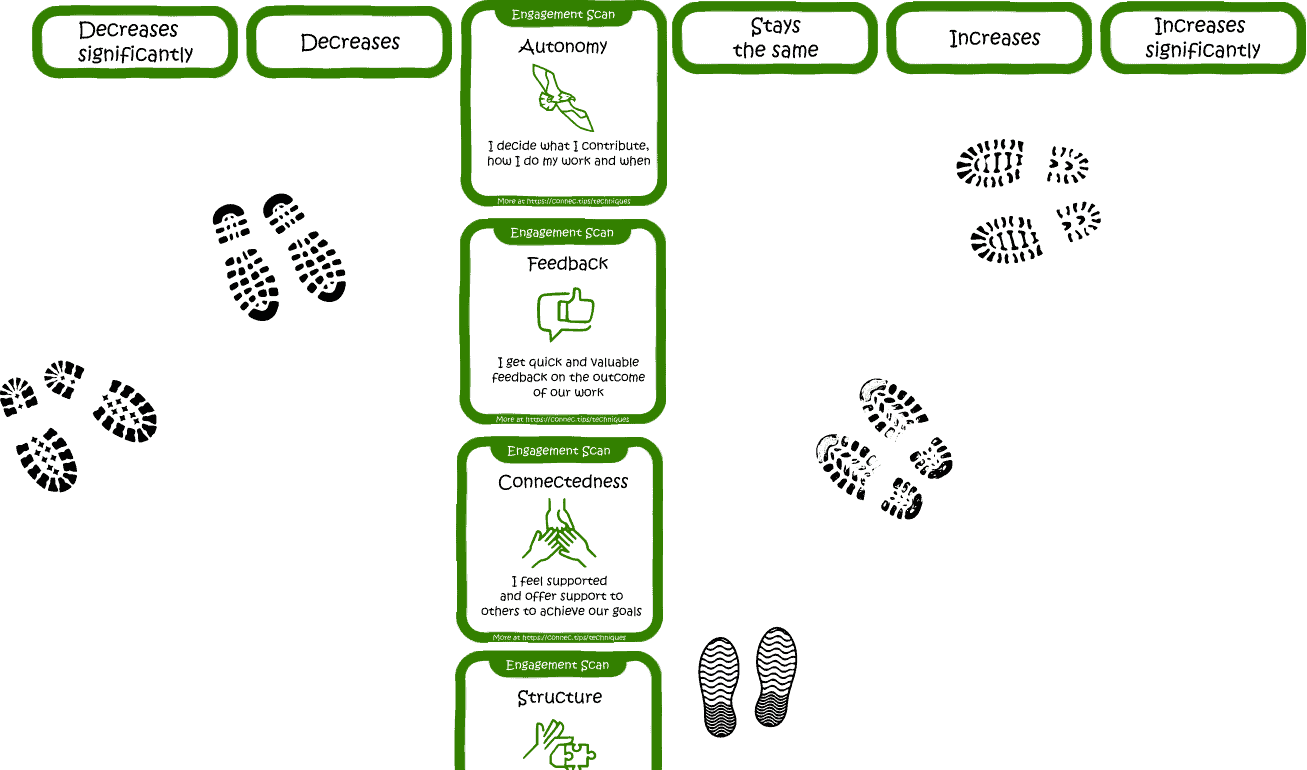Goal
Measure to what extent team members experience management interventions as helpful, so they increase engagement.
This technique helps you as a manager to gain insight into how interventions from you and the rest of the organization are received by your team. You can even assess them before execution to improve their impact.
- Increase in mutual trust
- Icreased effectiveness of management interventions
- More fun at work
Videos
What Motivates Us (10.5 minutes, EN)
This lively animation about Dan Pink’s book Drive illustrates the hidden truths behind what really motivates us at home and in the workplace.
Positive Emotions and the Broaden-Build theory (5 minutes, EN)
Barbara Fredrickson, director of the PEP Lab at the University of North Carolina, discusses the long-term effects of positive emotions in the context of her “broaden and build” theory.
To Work

The engagement scan is a simple instrument that consists of seven motivators. Each motivator looks at a specific energy sources, as identified by scientific research based on the Job Demands-Resource Model. An energy sources helps you cope with job demands and therefore contributes to the engagement and job satisfaction of team members.
- Select a (management) intervention or change to investigate. Write it down, for every participant to see. Select the 4 or 5 statements that are most relevant to this intervention/change. Put a scale from 1 to 5 on the floor, 1 meaning “Decreases significantly” and 5 meaning “Increasing significantly”;
- Put the first motivator on the floor and ask the team members to indicate how it is influenced by the change, by standing at the corresponding step in the scale;
- Ask for a volunteer to explain his or her position. Not every participant has to share. Optionally (if he/she is on 1, 2 or 3), ask what it would take for them to move one step to the right;
- Each participant puts a sticky note at their position;
- Repeat steps 3 to 6 for all selected motivators;
- Discuss the result and determine one or more points for improvement based on the insights.
You can download the floor sheets for this technique below.
Source
The Job Demands-Resource Model is a scientific model that was developed to investigate Burnout and later team results. There are numerous publications on the results (see More Resources).
You find a description of this model in section 2.3 Balance Discipline and Chaos of our book Connective Teamwork (EN, NL). The book helps you set your team in motion with a practical 5-step plan and 20 teamwork techniques. This technique is described in more detail in section 9.1 Engagement Scan.
You can learn more about and practice this technique in our Connective Team Coach Training Course.

More resources
- Artikel: Job Demands-Resources model, praktisch uitgelegd op Toolshero (NL)
- PDF: Het Job Demands-Resources model: overzicht en kritische beschouwing van Wilmar Schaufeli (NL)
- Psychische vermoeidheid en plezier in het werk: Toepassing JD-R model van Joris Van Ruysseveldt (NL)
- Article: The JD-R Model - Analyzing and Improving Employee Well-Being (on MindTools, EN)
Contact me



